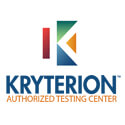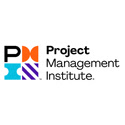CompTIA Network+ 2016
About This Course
Network+ certification program offers basic training to help you configure, install, troubleshoot, maintain and manage network infrastructure. Network+ 2016 certification drives you an inch closer to more advanced certifications such as Linux (RCHCE, Linux), Cisco (CCNP, CCNA) and Microsoft (MCITP, MCSE).
The course focuses on network functionalities and features in Server 2016 for Windows. Irrespective of whether you prefer to prepare for the exam or just want to improve your expertise in Windows Server 2016, this course would get you there.
Who Should Attend this Course.
Network+ 2016 is advisable for every network professionals. In addition, it is apt for:
- Medical equipment experts – Not suitable for them
- Service technicians
- Printer technicians
- Network consultants
- Network administrators
- System administrators
- IT technicians
Why This Course
Network+ 2016 certification will drive your networking skills to the next level. You will learn about infrastructure concepts inside every network also referred to as DNS and DHCP. Improve your understanding of network security, advanced networking infrastructure and remote network access. Be a pro with both distributed and core network infrastructure.
The biggest USP of Network+ 2016 certification is that you learn to identify:
- A range of network protocolsWAN and LAN components
- Network and security issues/threats
- Components of remote networking
- Concepts of advanced network infrastructure
Did you know that experts with CompTIA Network+ certification earn an average salary of $74,828 / annum.
Course Objectives
After successful completion of the course, you can:
- Manage WAN and LAN implementation
- Manage network security
- Remote work implementation
- Manage data storage
- Implement high level network infrastructure
- Implement DNS, IPAM (IP Address Management) and DHCP
- Implement distributed as well as core networks
Course Prerequisites
You ought to have prior experience in Windows server/client environment. Plus, basic knowledge of networking is icing on the cake.
Course Benefits
After the successful completion of this course, you will be able to:
- Implement DNS, IPAM (IP Address Management) and DHCP
- Implement high level network infrastructure
- Implement distributed as well as core networks
- Manage data storage
- Remote work implementation
- Manage network security
- Manage WAN and LAN implementation





























